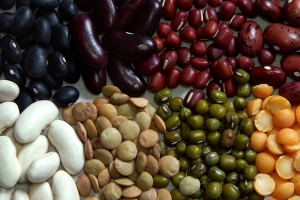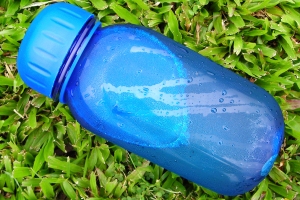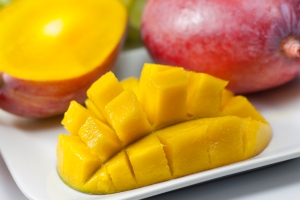 Beans, peas, and lentils are all part of the legume family, and they are available dried, canned, or frozen. Dried legumes are inexpensive, nutritious, and easy to cook – just follow the directions on the package. Canned legumes are convenient, but are more expensive than dried beans and often have salt added. When using canned legumes, drain and rinse to reduce the salt. Frozen are often the most expensive. They all provide fiber, protein, iron, potassium, as well as other vitamins and minerals. Use cooked or canned legumes in soups and stews or serve them on rice or other grains. Legumes are also a nice addition to tacos, burritos, and quesadillas. Many packages of dried legumes even have recipes on the back. Make legumes a filling, nutritious, low-cost part of your diet today!
Beans, peas, and lentils are all part of the legume family, and they are available dried, canned, or frozen. Dried legumes are inexpensive, nutritious, and easy to cook – just follow the directions on the package. Canned legumes are convenient, but are more expensive than dried beans and often have salt added. When using canned legumes, drain and rinse to reduce the salt. Frozen are often the most expensive. They all provide fiber, protein, iron, potassium, as well as other vitamins and minerals. Use cooked or canned legumes in soups and stews or serve them on rice or other grains. Legumes are also a nice addition to tacos, burritos, and quesadillas. Many packages of dried legumes even have recipes on the back. Make legumes a filling, nutritious, low-cost part of your diet today!
Monthly Archives: April 2016
Buying foods with less packaging
 Whenever you buy a packaged food, remember that you are paying for the packaging you throw away. In general, the less packaging a food has, the better the bargain. But keep in mind: it’s only a bargain if you’re going to use all of that food before it expires. If not, then the money you save is thrown away with the spoiled food. For foods that last a long time, like pretzels or crackers, it makes sense to buy larger packages and portion them out yourself instead of buying individually wrapped portions. When it comes to beverages, filling and re-using your own washable water bottle will save you money. Buying foods with less packaging is better for your wallet and for the environment!
Whenever you buy a packaged food, remember that you are paying for the packaging you throw away. In general, the less packaging a food has, the better the bargain. But keep in mind: it’s only a bargain if you’re going to use all of that food before it expires. If not, then the money you save is thrown away with the spoiled food. For foods that last a long time, like pretzels or crackers, it makes sense to buy larger packages and portion them out yourself instead of buying individually wrapped portions. When it comes to beverages, filling and re-using your own washable water bottle will save you money. Buying foods with less packaging is better for your wallet and for the environment!
Being active outdoors
 With warmer weather just around the corner, now is a great time to go outside and get moving. One benefit of exercising outdoors is that it’s free. You also get to know your community better and might inspire others by setting an example. There are lots of places outside to be active, but remember: safety first. Use common sense, and don’t go anywhere you feel is unsafe. Look for public parks, basketball or tennis courts, walking trails, and biking trails. Or you can simply use the roads and sidewalks around you. Be safe and enjoy being active outdoors!
With warmer weather just around the corner, now is a great time to go outside and get moving. One benefit of exercising outdoors is that it’s free. You also get to know your community better and might inspire others by setting an example. There are lots of places outside to be active, but remember: safety first. Use common sense, and don’t go anywhere you feel is unsafe. Look for public parks, basketball or tennis courts, walking trails, and biking trails. Or you can simply use the roads and sidewalks around you. Be safe and enjoy being active outdoors!
Enjoying mangoes in season
 It’s mango season in Central and South America, and you will start to see them on sale at your local grocery stores. Mangoes are a good source of fiber, and they are an excellent source of vitamin C – one cup of mango has more than half the vitamin C you need in a day! When buying mangoes, check for firmness; mangoes soften as they ripen. Once a mango is ripe, put it in the fridge to prevent rotting. To prepare a mango, cut each half along the flat side of the pit. Next, cut just the flesh (not the skin) into squares. Then, turn it “inside out” so the cubes of mango “pop” out. Cut or pull off the cubes and enjoy them in salsa, in fruit salads, or as a sweet, juicy snack!
It’s mango season in Central and South America, and you will start to see them on sale at your local grocery stores. Mangoes are a good source of fiber, and they are an excellent source of vitamin C – one cup of mango has more than half the vitamin C you need in a day! When buying mangoes, check for firmness; mangoes soften as they ripen. Once a mango is ripe, put it in the fridge to prevent rotting. To prepare a mango, cut each half along the flat side of the pit. Next, cut just the flesh (not the skin) into squares. Then, turn it “inside out” so the cubes of mango “pop” out. Cut or pull off the cubes and enjoy them in salsa, in fruit salads, or as a sweet, juicy snack!